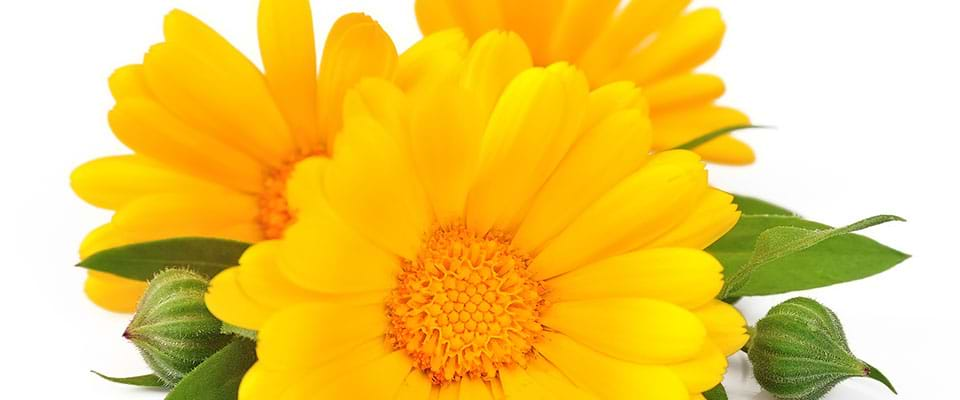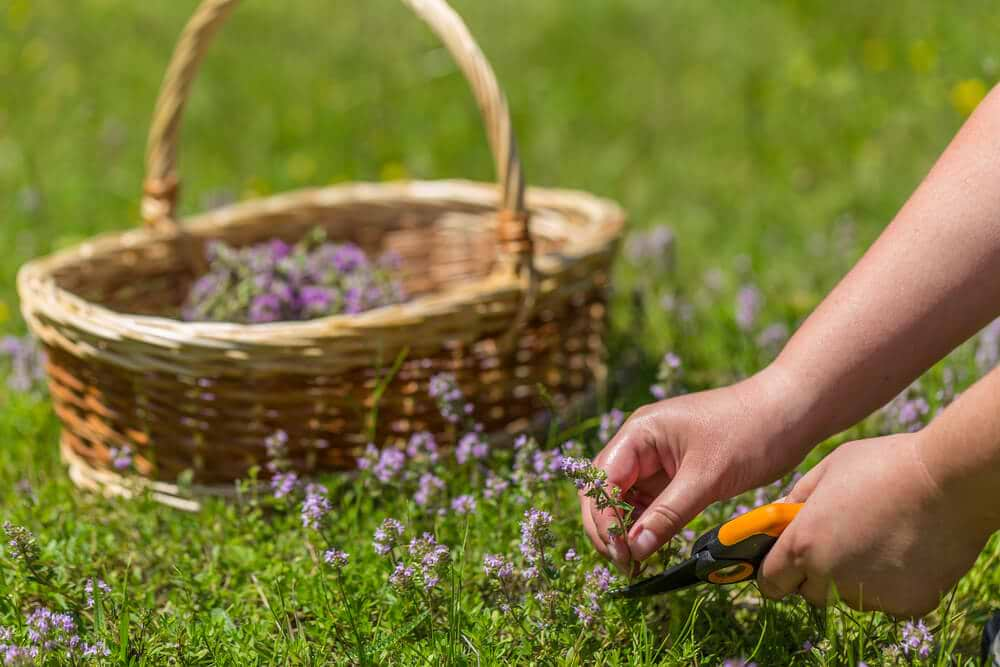Few flowers can match calendula in its beauty, versatility, and healing prowess. Known botanically as Calendula officinalis, this golden blossom has been a trusted herbal ally for centuries, gracing everything from ancient apothecaries to modern skincare routines. Its radiant yellow-orange petals, reminiscent of the sun, have earned calendula a reputation not just as a striking addition to gardens but as a symbol of warmth, clarity, and resilience. This remarkable plant has been cherished across cultures for its ability to heal wounds, soothe skin conditions, and even promote emotional balance.
Calendula’s uses extend far beyond its eye-catching blooms. Its medicinal properties have made it a staple in everything from teas and tinctures to ointments and salves, helping to soothe inflamed tissue states, and support healthy and glowing skin. Beyond its health benefits, calendula also brings a touch of magic to any garden, attracting pollinators while thriving in a variety of climates. It is both a practical and enchanting herb that has stood the test of time.
Whether you're on a mission to enhance your well-being naturally, delve into the world of herbal remedies, or simply bring a splash of sunny color to your outdoor space, calendula is here to inspire you. In this guide, we’ll explore the fascinating history behind calendula, uncover more research on its amazing health benefits, and share practical ways to incorporate this botanical gem into your life. Let’s dive into the world of calendula and discover why it has been treasured for generations.
A Brief History of Calendula
Calendula’s roots run deep in history, with a lineage that spans continents and cultures. The name itself, derived from the Latin calends (the first day of the month), nods to its nearly year-round blooming nature. Affectionately called "Mary’s Gold" in medieval Europe, its bright petals adorned festivals and religious ceremonies honoring the Virgin Mary.
From ancient Egyptian beauty rituals to Ayurvedic remedies in India, calendula has earned its reputation as a global symbol of renewal and healing. Its species name, calendula officinalis extract, marks its historical status as a medicinal staple. Apothecaries worldwide relied on this “doctor of the garden” for everything from skin healing to immune support.
The Health Benefits of Calendula Flower
Calendula isn’t just a pretty face—it’s a botanical powerhouse with countless benefits.
1. Enhances Skin Health
Calendula’s soothing properties are legendary. Rich in flavonoids and triterpenes, it supports skin by calming inflammation and support a healthy microbial balance. It’s like a first-aid kit in flower form, working wonders for:
-
Cuts and scrapes
-
Sunburns and minor burns
-
Itchy or irritated skin
-
Diaper rash
-
Occasional acne and redness
Bonus? Calendula supports collagen production, speeding up your body’s natural healing processes. Say hello to radiant, resilient skin and a clearer complexion!
2. Supports Lymphatic and Circulatory Health (Expanded)
Calendula plays a crucial role in supporting the body’s lymphatic and circulatory systems, both of which are essential for maintaining overall health and vitality. The lymphatic system, often referred to as the body's "waste management system," is responsible for eliminating toxins, waste, and other unwanted visitors.
This makes it a valuable herbal remedy during periods of recovery, especially after fighting off a bug. Calendula can help ease lymphatic congestion and promote the restoration of balance.
3. Promotes Digestive Health
For centuries, the calendula plant has been steeped as a tea to soothe the stomach and support digestion. Its soothing properties make it ideal for:
-
Easing digestive discomfort
-
Expelling excess gas
-
Calming an upset stomach
Beyond soothing an upset stomach, calendula also plays a role in maintaining long-term digestive health. Its natural compounds work synergistically to soothe inflamed tissue states in the digestive tract, creating an ideal environment for healthy digestion and nutrient absorption. This makes it a gentle yet effective option for those dealing with chronic digestive complaints.
4. Eases Women’s Health Concerns
Calendula’s emmenagogue properties (promoting blood flow) make it a trusted herb for easing menstrual cramps and pelvic tension. During menopause, it can provide soothing relief for dryness and discomfort. Think of it as a floral hug during those challenging times.
Beyond menstrual support, calendula is a powerful ally for women’s health throughout various life stages. Its gentle, calming properties can help heal minor cuts and wounds and calm external and internal irritations.
Calendula is an excellent addition to herbal washes or creams for supporting feminine hygiene. Additionally, its skin-nourishing benefits can extend to postpartum care, where it aids in soothing perineal discomfort and promoting healing after childbirth.
For women experiencing hormonal shifts during menopause, calendula continues to shine as a multi-tasking remedy, offering support for dryness, reducing irritation, and promoting overall comfort. Its versatility and safety make it a cherished herb for holistic care, addressing both acute and long-term concerns while nurturing the unique rhythms of women’s health.
5. Supports Eye Health
Surprise! Calendula oil isn’t just for your skin and gut—it’s a secret weapon for soothing irritated eyes. Its microbial balancing properties make it a natural choice for eye washes or compresses.
Calendula isn't just a powerhouse for skin and digestion; it also offers remarkable benefits for eye health. Its healing properties make it an effective natural remedy for soothing irritated or strained eyes.
Whether it’s due to allergies, environmental pollutants, or extended screen time, calendula products can help soothe redness, swelling, and discomfort. Eye washes or compresses infused with calendula can provide gentle relief, creating a calming effect on tired or overworked eyes. By reducing the biofilm associated with certain eye-related infections, calendula helps maintain overall ocular hygiene and health.
Allergies, pollutants, or too much screen time? Calendula’s got your back—or rather, your eyes.
Growing and Harvesting Calendula
Growing calendula is as easy as falling in love with its sunny charm. This annual thrives in well-drained soil and full sun, blooming continuously from spring to frost.
Pro tips:
-
Sow seeds directly into the soil in spring or autumn.
-
Deadhead blooms regularly for continuous flowering.
-
Harvest flowers during the warmest part of the day for peak resin content.
Dry the blossoms in a well-ventilated area and store them in glass jars. Voilà! Your personal stash of herbal gold.
Ways to Use Calendula in Everyday Life
Calendula’s versatility makes it a must-have in your herbal medicine toolkit. Here’s how to incorporate it into your daily routine:
-
Salves & Oils: Soothe burns, cuts, and dry skin.
-
Teas: Brew dried petals for digestive or immune support.
-
Compresses: Calm irritated skin or eyes with a calendula tea compress.
-
Culinary Magic: Sprinkle fresh petals into soups or salads for a pop of color and antioxidants.
Synergistic Herb Combinations
Calendula is a powerhouse on its own, but its healing properties are significantly enhanced when combined with other complementary herbs. Here are a few standout combinations and how they work together:
-
Chamomile: Chamomile and calendula form a soothing duo, working together to calm redness, and soothe irritation, especially for sensitive skin. This combination is often found in skincare products like creams and balms for its calming effects on the inflammation response. It is also a great pair in teas to promote relaxation and ease digestive discomfort.
-
Plantain: When paired with plantain, calendula’s wound-healing abilities reach a new level. Plantain is renowned for its ability to draw out toxins and soothe damaged tissue, making it an excellent complement to calendula’s regenerating properties. Together, they create powerful salves or poultices for cuts, scrapes, and insect bites.
-
Licorice Root: Licorice root amplifies calendula’s benefits for the digestive and immune systems. Known for its ability to soothe the gut lining, licorice root combines with calendula to support healthy digestion, combat irritation, support nutrient absorption, and strengthen the immune response. This pairing is often used in herbal teas or supplements designed to address gut health and overall wellness.
Each of these combinations highlights calendula's versatility and ability to work harmoniously with other herbs, creating deeply effective remedies for a range of needs. Whether used for skin, digestion, or immune support, these pairings showcase the power of herbal synergy.
Unlock the Sunlight Within
Calendula teaches us resilience, warmth, and renewal. Whether in your skincare, tea, or garden, this golden flower inspires healing from the inside out. Ready to let calendula work its magic?
From apothecaries of the past to your modern wellness routine, calendula is your ally in natural health. So why not own your health with this radiant herbal superstar?
Calendula in WishGarden Formulas
At WishGarden Herbs, calendula plays a starring role in many of our formulas, celebrated for its gentle yet highly effective properties.
Meet the formulas:
-
Clear Complexion - promotes glowing and clear skin
-
Lymph Mover - supports lymph flow and natural detoxification
-
Daily Immune Builder for Kids - gentle immune support for kiddos
-
Ear Be Well Treatment Kit - soothes irritation and promotes healing
-
Kick-It Biotic for Kids - supports healthy microbial balance
-
Kick-it Immune for Kids - soothes coughs and supports immunity
-
Happy Ducts - soothes irritation and supports immunity
-
ReBalance - supports healthy hormones and vaginal health
-
Baby Bum Diaper Rash Balm - nourishes baby’s delicate skin.
- Oh Baby! Chamomile Oil - nourishes baby’s skin
- Oh Baby! Lavender Oil - nourishes baby’s skin
- Perineum Massage Oil Birthing Prep - softens the skin in weeks leading up to labor
- Pregnant Belly Skin Elasticity Oil - skin nourishing for pregnancy & postpartum
- New Mother Nursing Balm - moisturizing balm for nursing moms
The Power of Liquid Herbal Extracts
Why choose liquid herbal extracts over other forms? These concentrated tinctures offer several advantages that make them a superior choice for herbal supplementation:
-
Fast-Acting Benefits: Liquid extracts bypass the digestive process required for breaking down pills or capsules, allowing for quick absorption directly into your bloodstream.
-
Superior Absorption: Your body can absorb liquid herbs more efficiently than solid forms, making more of the beneficial compounds available for use.
-
Easy to Customize: Liquid extracts are simple to adjust for your needs.
-
Long Shelf Life: When properly stored, liquid herbal extracts maintain their potency for extended periods.
[[ recipeID=recipe-2m689w3bq, title=Calendula Infused Oil ]]
Herbalist Q&A: Calendula
Are marigolds and calendula the same thing?
Not exactly! While the calendula officinalis plant is often called “pot marigold,” it’s a completely different plant from the marigolds you might plant as ornamental flowers in your garden (like those in the Tagetes genus). Calendula (Calendula officinalis) belongs to the daisy family and is celebrated for its medicinal and culinary uses, whereas Tagetes marigolds are primarily decorative and used for pest control in the garden.
What does calendula flower do for the garden?
Calendula is a garden MVP! Its bright blooms attract pollinators like bees and butterflies, making it a great companion plant for fruits and vegetables. It also repels certain pests, such as aphids, while improving soil health. As an added bonus, its petals can be harvested for herbal and culinary uses, making it a dual-purpose plant for gardeners.
Do calendula flowers come back every year?
Calendula is technically an annual, meaning it completes its life cycle in one growing season. However, it often self-seeds, meaning it can reseed itself and grow again the following year without you having to replant. With proper care and favorable conditions, you’ll likely see its cheerful blooms return year after year as if by magic!
Where does calendula grow best?
Calendula thrives in full sun and well-drained soil. It’s highly adaptable and can handle a range of soil types as long as it doesn’t stay too wet. This hardy flower is happiest in cool weather, making it ideal for spring and fall gardens. If you live in a hotter climate, provide some afternoon shade to keep it blooming longer.
Rebecca Younger is passionate about herbs and women's health. She aspires to plant seeds of inspiration within her community about plant medicine and healthier ways of life. She studied Herbal Medicine at Herbalism Roots in Denver and is a certified Doula through the Matrona Foundation. She is the Brand Communications Specialist at WishGarden Herbs.
For educational purposes only. This information has not been evaluated by the Food and Drug Administration. This information is not intended to diagnose, treat, cure, or prevent any disease, or to sell any product.
Recommended Products
Further Reading
















